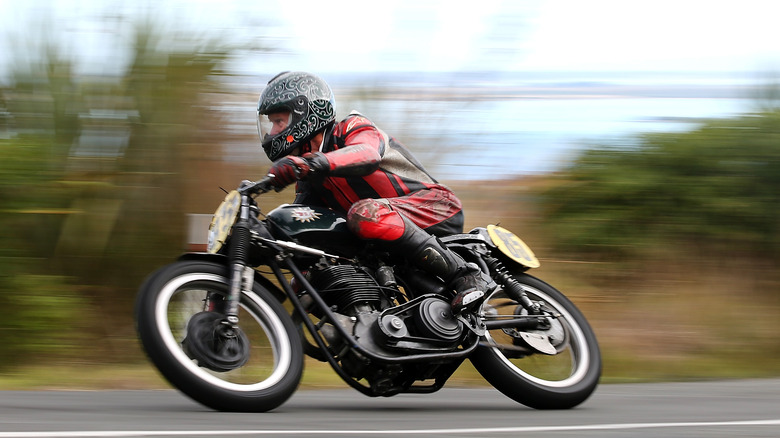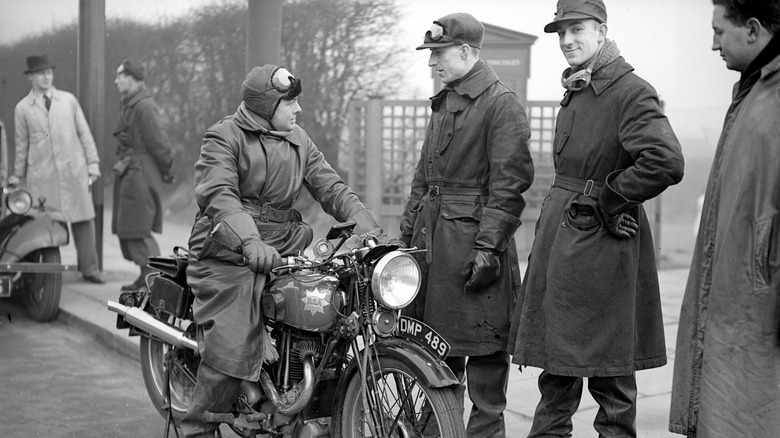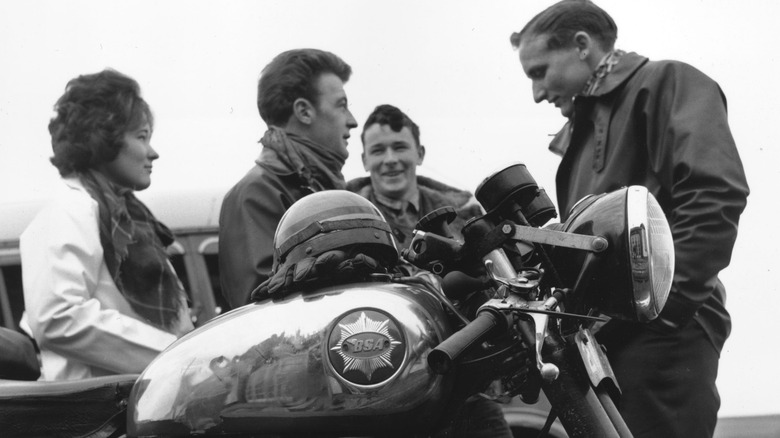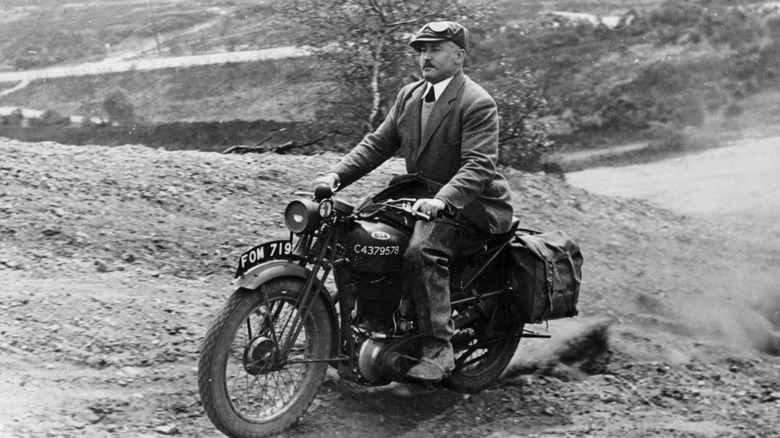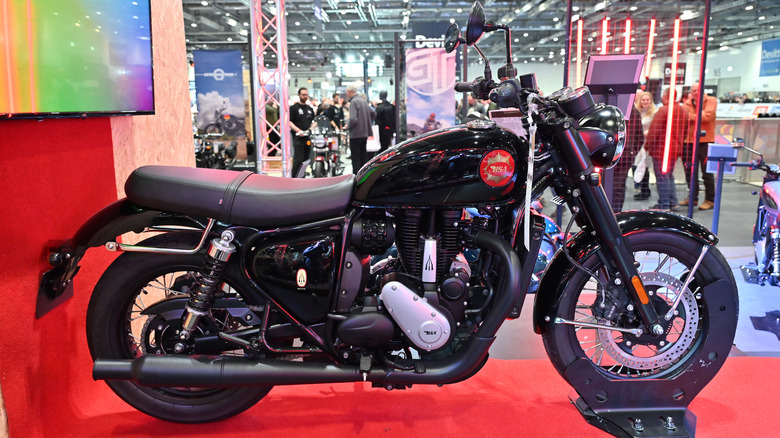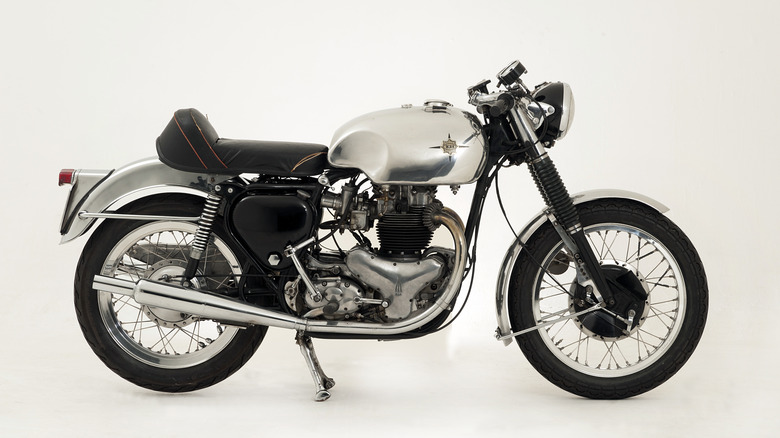5 Things Every Motorcycle Rider Should Know About BSA
The Birmingham Small Arms Company, better known as BSA, started in 1861, not with bikes but with guns. It was made by 14 experts in making guns and quickly became the biggest company in Europe for making weapons. As the years went on, around 1910, BSA began to make motorized bicycles, which became a big hit in the late 1940s and later turned into the motorcycles we know today.
BSA became really good at making bikes that people liked for racing or just riding around. Their bikes were well-made and didn't cost too much, which made them very popular — in fact, BSA is arguably among 10 of the coolest vintage motorcycles that won't break the bank. By the 1960s, BSA was the biggest name in motorcycles around the world. While the company's story, from guns to motorcycles, is really interesting, there's much more to BSA. So, here are five things every motorcycle rider should know about BSA.
BSA's war contributions
Back in 1914, when World War I was happening, BSA was keeping itself super busy — not just by building bikes but also by making firearms. They made 1.5 million rifles and 145 machine guns to help the soldiers. But that's not all. They also made the first-ever folding bicycle, machine tools, and even aero components. Plus, they had ambulances and cars for the army, thanks to their Daimler brand, which they bought in 1910.
After World War I, BSA didn't stop. They bought companies that made airplanes and, in 1931, got back into making weapons and military vehicles to get ready in case another war started. And sure enough, World War II came around in 1939. By then, BSA was huge — the biggest motorcycle company in the world at the time, with 67 factories in the UK. During this war, they made over 126,000 M20 motorcycles for the British soldiers. BSA also made guns and parts for bombs, using their peacetime inventions to help with the war effort.
BSA's achievements
The 1920s marked the beginning of BSA's foray into the automotive sector, initially with a V-twin engine light car in 1921, followed by more sophisticated four-cylinder models. They also made headlines in 1924 when their motorcycles climbed Snowdon for the first time. The 1930s brought more success. BSA came out with the Blue Stars and Empire Stars motorcycles in 1931, which were really reliable. The Gold Star motorcycle came out in 1938. It had a 500cc engine and was perfect for racing, too.
After World War II, BSA became even bigger — they bought Triumph in 1950. By 1953, BSA Motorcycles Ltd. had become its own company, and by the end of the 1950s, BSA was the biggest motorcycle maker in the world. They actually made one out of every four motorcycles sold globally.
The late 1960s were a golden era for BSA. They won the Queen's Award for Industry in 1967 and 1968 because they were that great at selling motorcycles overseas. By 1969, 80% of all motorcycles Britain sent abroad were BSAs.
The decline of BSA
BSA had their run, but by the 1970s, things started to go downhill. Japanese brands like Honda and Yamaha came into the picture and changed the game. BSA tried to keep up by focusing on selling in the USA and Canada, but it didn't really help.
By 1971, the writing was on the wall. BSA merged with Norton-Villiers, but it was too little, too late because the merger couldn't stem the tide against Japanese innovation and efficiency. BSA's product line, including the Gold Star 500, 650 Thunderbolt/Lightning, and the 750cc Rocket Three, could not compete with the advanced and faster Japanese bikes. The result was inevitable: factory closures and the cessation of motorcycle production by 1973. The BSA name lingered on in various forms, including military bikes and machines for developing countries, but for enthusiasts, the brand's glory days ended in 1972.
In subsequent years, the BSA name passed through various hands. Notably, the Canadian Aquilini family acquired the UK rights, leading to the creation of BSA Regal and models like the Gold SR. These tried to mix classic BSA styling with modern Yamaha engines, but they were more of a nod to the past than a big comeback.
The rise of BSA
A lot of motorcycle riders out there will be happy to know that the BSA story did not end with the company being forgotten to time. After a long wait, the BSA Company, now part of the Mahindra Group, brought back what might be one of the best retro-style motorcycles on the market right now — the BSA Gold Star.
The new Gold Star is special because it runs on a single-cylinder engine, making it somewhat different from other bikes in its class. It has 45 bhp at 6,500 rpm and 40.5 lb-ft of torque at 4,000 rpm. The bike's design also stands out — it looks like the old Gold Star but fits right into today's world.
When it comes to price, the Gold Star is expected to come with a price tag of close to $7,000, which should make it a great choice for people who want a classic bike without spending too much.
Other BSA models
BSA motorcycles are more than just the famous Gold Star. This company made many different bikes that people loved for various reasons. Starting with the Bantam — it came out in 1948 and was perfect for people who needed an easy way to get around after the war. This small bike, with an engine size between 125 and 175cc, was also good enough for people to use it for racing off-road.
Then, there's the A65 series, which started in 1962. This series included models like the Thunderbolt, Lightning, and Spitfire. They all had a massive 650cc engine. As you might've guessed, these bikes were for people who wanted to speed.
The B44 and B50 models, available from 1964 to 1971, were special too. The B44 got its start from another bike called the Rocket Gold Star. It quickly became a favorite in races. Then came the B50, a bigger version with a 499cc engine, introduced in 1966. It continued the tradition of strong, single-cylinder bikes that could do well anywhere. If there's one takeaway as a motorcycle rider, it's that BSA-made bikes were well-made, looked good, and could go fast.
